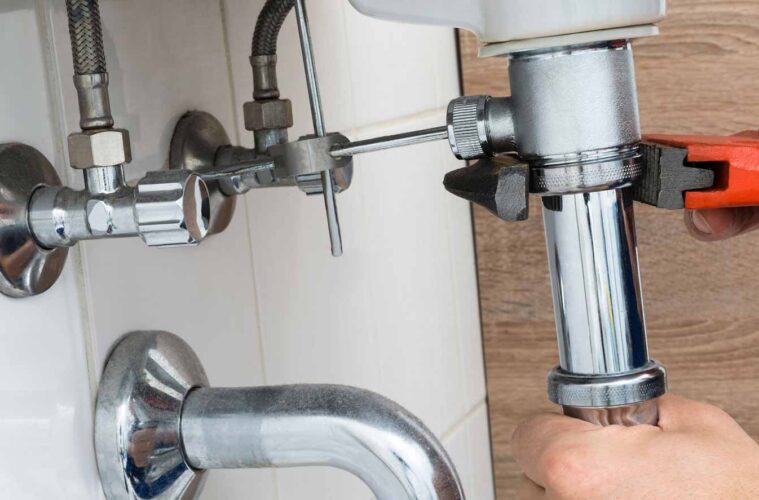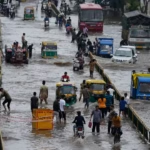If you paid attention to the news out of Austin in early 2021, then you’re probably marginally aware of the damage frozen pipes and bursting pipes can cause.
For many homeowners, having pipes bursting during the winter is a nightmare scenario. That’s why it’s important to know how to prevent this from happening.
Are you worried about the pipes in your home as the temperatures drop? Are you going to be leaving for a period of time in the winter and want to protect your pipes?
Let’s take a look at how to prevent frozen pipes and bursting pipes in your home.
Insulate Pipes
For the water pipes that are in areas of your home that don’t have proper insulation, such as your attic or your basement, consider adding extra insulation to help avoid freezing. Insulating your pipes anywhere in your house can help protect them from freezing. Sleeves made of fiberglass or foam rubber can help.
This is an easy fix for exposed pipes but an expensive repair if you have to open the walls, ceilings, or floors. You can also add extra insulation to the ceilings and walls to help keep your pipes warm.
If your pipes are exposed to prolonged freezing temperatures, insulation will not prevent freezing. If a home is going to be left unheated, you’ll need to take other precautions.
While homeownership comes with a lot of responsibilities, like making sure your pipes don’t burst, it also comes along with a lot of benefits. Check out these top mortgage brokers if it’s time for you to buy a home.
Caulk or Seal Cracks
If there are any gaps around the holes in walls or floors where pipes run through, you’ll want to seal them. This is particularly true if the holes are letting cold air in. Spray foam insulation or caulk can be used to fill spaces.
If it is possible, you will want to seal these holes on both the exterior and interior sides of the floor or wall.
Protect Outdoor Faucets
When you are winterizing your home, you should always disconnect your garden hoses. If you have outdoor faucets that have cut-off valves, make sure the faucets are drained and they are closed. You can also use faucet covers during the winter months to add extra protection.
Start a Small Drip If Temperatures Drop
If it is coming very cold outside, you can start a small drip in the faucets in your home of both hot and cold water. This helps water moving through your system and can help prevent freezing.
Keep the Heat On
Make sure that the heat is left on if you are leaving for a long period of time. If you have tenants, it might be difficult to convince them to leave the heat on, particularly if they pay for the heating bill. Inform them about how leaving the heat on can prevent pipes from freezing and how freezing pipes can lead to water damage.
Direct Warm Air to Cold Areas of Your Home
It is common for pipes located near a window or outside wall before those that are further inside your home. Make sure that warm air is being directed towards those colder areas.
Apply Heating Tape
One product you can purchase to help protect your home from pipe bursting is heating tape. This is a particularly good solution if there are short sections of pipe that are easily accessible and at high risk for freezing.
There are two different forms of heating tape you can purchase. One has to be plugged in when it is necessary to heat your pipes. The second turns itself on and off when it senses that heating is necessary.
It’s important to follow the directions of the product as these products can be dangerous.
Come Up With a Plan For Being Away
If you are going to be leaving your home during the winter, you’ll want to have a plan in place to prevent frozen pipes. The last thing you want is to come home from a vacation or business trip to find a burst pipe or several.
You’ll want to leave the heat on even when you are away. You can also your garage door closed, interior doors open, and open your cabinet doors. Ask a neighbor to check on your pipes periodically so that you can know about an issue if one occurs.
For longer trips, you might consider having the water drained and shut off. You’ll still want to take extra precautions like keeping the heat on even if you do this.
What Are the Consequences of Pipes Bursting?
When frozen pipes burst in your home, they will cause water damage that can damage your floors, walls, and belongings. Whether a burst pipe is just a leak or a major breakage, water damage will first appear in the interior and exterior walls.
The insulation can become saturated with water and electrical wiring can short out. This can increase the risk of fire. Water can also saturate wood, stucco, or plaster on your exterior house walls. Structural weakness can occur if water saturates or accumulates structural components for a long time.
Your floors can become flooded following pipe damage. Your flooring can become damage and mold can grow. Even concrete floors can settle or crack due to long-term water damage.
Pipes bursting can also damage your furniture and the belongings in your home. Depending on the severity of the leak and how long the water is allowed to accumulate, the pipe bursting cost for repairs can vary greatly.
Preventative Measures Can Help Avoid a Burst Pipe
A burst pipe can range from a small headache to a complete nightmare depending on the nature of the leak and how long it was leaking before it was repaired.
Using these preventative measures can help to ensure that you don’t have to deal with either scenario.
Did you find this article on pipes bursting interesting? If so, be sure to check out the rest of our blog for more fascinating and informative content!













